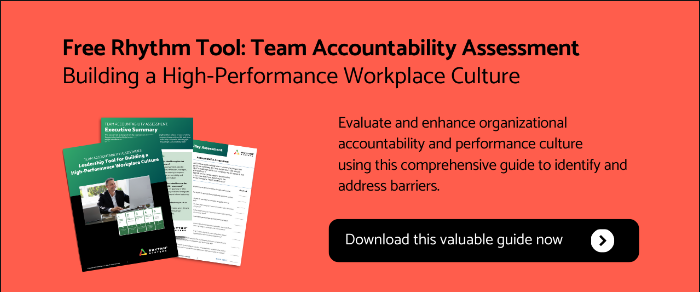Identify and Develop Potential Leaders
Building an effective leadership dream team requires identifying and nurturing potential leaders. Look for individuals who demonstrate strong leadership skills, a growth mindset, and a personal and professional development commitment. These potential leaders will be crucial in driving your organization's success and should be given opportunities to grow and excel.
Investing in professional development programs, coaching, and mentorship for your potential leaders will enhance their skills and demonstrate your commitment to their growth. Provide them with challenging assignments, exposure to different areas of the business, and opportunities to lead cross-functional teams.
By developing potential and future leaders, you build a solid leadership team and ensure a pipeline of future leaders who can step up when needed. This proactive approach will enable your organization to adapt to changes, sustain growth, and maintain a competitive advantage.
Foster an Environment of Trust and Collaboration
Trust is the foundation of any successful team, especially in a leadership context. Middle-market executives should prioritize building trust among team members by creating an environment of open communication, transparency, and collaboration.
Encourage your leadership team members to express their opinions, share ideas, and challenge each other constructively. Foster a culture where everyone feels comfortable speaking up and knows their perspectives are valued. When individuals trust each other and are free to share their thoughts openly, it leads to better decision-making and innovation.
Promote collaboration within your team by encouraging cross-functional projects and team-building activities. This will help your leadership team members build relationships, learn from each other, and leverage their diverse strengths and skill sets to drive business success.
Regular management team meetings are essential for building trust and collaboration and are a great place for leadership team development. These meetings should provide a platform for team members to align their efforts, discuss progress, and address any challenges or roadblocks. Create an environment where everyone feels heard, respected, and valued.
Ensure Role Clarity and Team Accountability
Role clarity is crucial for an effective leadership dream team. Middle market executives should communicate each team member's roles, responsibilities, and expectations to eliminate confusion and ensure everyone understands their specific contributions.
Each team member should have a clear understanding of their role as well as the roles of their colleagues. This clarity enables the team to collaborate seamlessly, avoid duplication of efforts, and maximize productivity. You can clarify roles by defining individual goals and objectives, specifying critical tasks and deliverables, and establishing performance metrics.
In addition to role clarity, it is essential to foster accountability within the team. Define clear expectations for performance and hold team members accountable for their deliverables and commitments. Encourage a culture of ownership, where each team member takes responsibility for their actions and strives for excellence.
Regular check-ins and performance management reviews can monitor progress, provide feedback, and address any issues or concerns. Celebrate successes and recognize the achievements of your leadership team members, creating a positive and motivated work environment.
Cultivate a Strong Company Culture
A strong company culture is essential for building an effective leadership dream team. Middle-market executives should cultivate a culture that aligns with their values, promotes collaboration, and recognizes and rewards excellence. Create a culture that attracts and retains the best employees and allows for problem-solving and strong team morale.
Define and communicate your organization's values, mission, and vision to the leadership team and the entire organization. These core beliefs will guide the behavior and decision-making of your team members, ensuring that everyone is working towards a common purpose.
Encourage and recognize behaviors that support the desired company culture. Reward team members who demonstrate leadership skills, collaboration, and innovation. Set an example by embodying the values and behaviors you want to see in your leadership team.
Invest in team-building activities and initiatives that promote a sense of belonging and camaraderie among your leadership team members. This can include offsite retreats, team-building exercises, or volunteering activities that allow them to connect personally and form meaningful relationships.
A strong company culture fosters a positive work environment and attracts and retains top talent, Which becomes a competitive advantage for your organization, making it an employer of choice. Leadership team development pays for itself quickly and pays dividends yearly as their learning passes through the organization through an effective Rhythm of Work.
Six Steps to Build for Executive Team Development
Building a solid and effective leadership team is critical for middle-market executives who aspire to achieve their dreams and goals. With a clear focus, intention, and a commitment to continuous self-growth, creating a high-performing leadership team is not only achievable but also essential for an organization's success. This section will explore the critical steps in building a leadership team and highlight the importance of maintaining a clear focus and intention throughout the process.
Step 1 in Building a Leadership Team: Clarify Your Vision
Building a leadership team starts with a clear vision. As a middle market executive, defining and articulating your company's vision, mission, and core values is vital. This vision will serve as a guiding light for your team members, helping them align their efforts toward a common goal. Be clear and specific in communicating your image; it will set the tone for the entire team's direction and activities.
Step 2: Identify Key Competencies
To build an effective leadership team, it is crucial to identify the critical competencies required for success. Evaluate the skills, experience, and expertise necessary to achieve your organization's goals. Look for individuals with specific qualities and skill sets that complement each other and align with your organization's vision and values. By diversifying competencies within the team, you can foster creativity, innovation, and collaboration.
Step 3: Invest in Personal Development
Building a high-performing leadership team goes beyond identifying the right individuals - it requires investing in their personal development. Encourage team members to continuously grow professionally and personally by providing them with training, mentoring, and coaching opportunities. Investing in their development enhances their skills and nurtures a culture of continuous learning and improvement within the team.
Step 4: Foster Team Collaboration
Successful leadership teams thrive on collaboration and effective communication. Encourage open and honest discussions among team members, where ideas can be freely shared and debated. Foster a culture of trust and inclusivity, where everyone feels valued and encouraged to contribute their unique perspectives. You can arrive at better decisions and innovative solutions by leveraging the team's collective intelligence.
Step 5: Define Roles and Responsibilities
Clarity in roles and responsibilities is crucial for a well-functioning leadership team. Clearly define and communicate each team member's roles and expectations, ensuring no ambiguity. This clarity enables team members to focus on their specific areas of expertise and allows for seamless collaboration. Regularly review and revise roles to adapt to changing circumstances and emerging opportunities.
Step 6: Drive Strategic Thinking
Influential leaders must make time for strategic thinking, planning, and discussions. They must dedicate time and resources to analyzing the market, developing growth strategies, and anticipating future challenges and trends. They must maintain a balance between innovation and calculated risks. This strategic perspective will allow them to make informed decisions aligned with long-term goals.
Middle-market executives must maintain a clear focus, intention, and commitment to continuous self-growth to build a solid, high-performing leadership team. By clarifying their vision, identifying key competencies, investing in development, fostering collaboration, defining roles, and driving strategic thinking, they can create a leadership team that achieves their dreams and goals and steers their organization toward success. With the right mindset and habits, building a leadership team is not only possible but essential for the growth and prosperity of an organization.
Identify the Key Roles and Responsibilities You Need When Building a Leadership Team
Building a solid and effective leadership team involves more than traditional leadership positions. As companies evolve and adapt to the changing business landscape, it becomes crucial to identify the nontraditional leadership roles that can address emerging challenges and opportunities. These nontraditional roles often become part of the C-suite, the highest level of executives in an organization.
One key reason for adding nontraditional leadership positions to the C-suite is to focus the organization on critical capabilities for delivering on the emerging value proposition. These roles are designed to bring a specialized skill set and expertise that aligns with the company's strategic direction and long-term goals. By incorporating these positions into the leadership team, companies can tap into new perspectives, creativity, and innovation to drive growth and success.
Some examples of nontraditional leadership positions that are becoming more prevalent in the C-suite include:
- Chief Innovation Officer (CIO): This role drives innovation initiatives across the organization, fostering a culture of creativity and exploration. The CIO identifies new market opportunities, creates strategies for product development, and leads cross-functional teams to bring innovative products and services to market.
- Chief Digital Officer (CDO): With businesses becoming increasingly digitalized, the CDO is responsible for developing and implementing the organization's digital strategy. This includes leveraging technology to drive operational efficiencies, improving customer experience, and exploring new digital channels for growth.
- Chief Sustainability Officer (CSO): As sustainability and corporate social responsibility become integral to business strategies, the CSO ensures that the organization's operations align with environmental, social, and governance best practices.
By incorporating these nontraditional leadership positions into the C-suite, organizations can cultivate a leadership team equipped to navigate the challenges and capitalize on the opportunities of the modern business landscape. However, it is essential to remember that a clear understanding of everyone's roles and responsibilities is crucial for building an effective team. With defined roles, team members can focus on their expertise and work collaboratively toward achieving the organization's goals.
Develop the Executive Leadership Team
Building a solid and high-performing executive leadership team is crucial for middle-market executives aiming to achieve their dreams and goals. An effective executive leadership team acts as the backbone of an organization, guiding it toward success by setting the vision, making critical decisions, and inspiring the entire team to reach its full potential.
Executive team-building and development offer several benefits that can significantly impact organizational success. Firstly, assessing the current effectiveness of the executive leadership team sets the foundation for improvement. By evaluating team dynamics, communication patterns, and individual strengths and weaknesses, executives can identify areas for development and implement targeted strategies to enhance collaboration and performance.
The regular assessment allows for identifying and cultivating potential leaders within the existing team, ensuring a talent pipeline for future leadership roles.
Executive team-building enables the organization to establish a strong leadership culture that cascades down to all levels. When the senior leadership team demonstrates strong communication skills, trust, and cohesion, it sets an example for the organization. This creates a positive ripple effect, improving teamwork, goal alignment, and employee engagement.
By investing in the development of the executive leadership team, middle-market executives lay the foundation for a high-performing and successful organization.
Develop Key Leadership Skills and Attributes
Building a high-performing executive leadership team requires more than just assembling a group of talented individuals. It requires a strategic approach to ensure the team possesses the necessary skills and attributes to drive success and achieve the organization's goals.
Some of the critical skills and attributes needed in an effective executive team include:
- Visionary Leadership - Inspire action toward a compelling vision for the future. Provide strategic direction and use vision casting to spread it.
- Decisiveness - Make timely decisions with confidence based on available data. Don't delay unnecessarily.
- Communication - Communicate goals, plans, and reasoning behind decisions. Listen actively.
- Agility - Adapt plans and priorities as circumstances evolve. Lead teams through ambiguity.
- Collaboration: Solicit broad input, build trust, resolve conflicts, and unite diverse groups toward a shared mission.
- Accountability - Hold yourself and team members accountable. Deal with non-performance proactively.
- Critical Thinking - Ask probing questions. Analyze issues from multiple angles before forming conclusions.
- Coaching - Develop team members' capabilities through mentoring, training, and growth opportunities.
- Integrity - Build credibility through consistent actions, honesty, and strong ethics. Lead by example.
By instilling these essential leadership skills and behaviors, executives can build cohesive, high-performing teams ready to capitalize on opportunities and lead their organizations to success.
Promote Collaboration for Leadership Team Effectiveness
In today's dynamic and competitive business landscape, collaboration is essential for building and maintaining a successful leadership team. Leaders' ability to work together toward a common goal is crucial for achieving organizational success and propelling the company toward its dreams and goals.
Collaboration in an executive team promotes a collective mindset where the focus is on the organization's overall success rather than individual interests. When leaders collaborate, they can leverage their diverse backgrounds, perspectives, and skill sets for the company's benefit. This collective intelligence brings innovative ideas, improved decision-making, and a higher overall performance.
A lack of collaboration within a leadership team can lead to various challenges. When leaders work in silos and fail to collaborate effectively, it often results in a decrease in productivity and a lack of alignment with the company's vision. Decision-making becomes fragmented, communication breaks down, and conflicts arise, creating a toxic work environment that hinders growth and progress.
On the other hand, a collaborative leadership team understands that each member brings unique strengths and expertise to the table. They value each other's contributions, actively seek diverse perspectives, and openly communicate and share information. This enhances team cohesiveness and ensures that decisions are made with a holistic view of the organization, considering the different functions and departments.
To summarize, promoting collaboration is a pivotal leadership skill that enables leveraging diverse viewpoints, strengthening team dynamics, and driving optimal decisions. Making collaboration a priority creates an environment where the leadership team can thrive and steer the organization strategically toward fulfilling its purpose.
Drive Effective Strategic Execution
Execution is crucial in building a high-performing leadership team to help middle-market executives achieve their dreams and goals. It involves translating strategic plans into actions and outcomes. Without effective execution, even the most well-thought-out strategies may fail to produce the desired results.
Some key strategies that enable effective execution include:
- Set specific, measurable goals aligned with the overall strategy
- Develop detailed project plans and accountabilities
- Foster a culture of ownership and accountability
- Establish effective monitoring and tracking of progress
- Communicate goals, plans, and progress proactively
- Make data-driven decisions on adjustments needed
- Motivate teams by celebrating wins and milestones
Additionally, leaders must anticipate potential risks or roadblocks impacting execution and implement contingencies to navigate them. By embedding strong execution discipline, organizations can consistently translate strategic priorities into positive business outcomes.
Flawless execution requires meticulous planning, rigorous follow-through, Adaptability, and proactive course corrections based on real-time data. With exemplary leadership focus and commitment to execution excellence, teams can overcome obstacles and drive breakthrough results.
The Value of Coaching and Developing Team Members
While assembling a talented leadership team is crucial, continuously coaching and developing team members is equally essential. This continuous investment in their growth and capabilities pays enormous dividends in performance, retention, and leadership bench strength.
Effective coaching builds critical skills like resilience, collaboration, communication, and decision-making. A personalized coaching approach recognizes individual needs and provides a safe space for self-reflection and skill building. As a result, team members are better equipped to handle challenges, work cohesively as a unit, and take on greater responsibilities.
In addition to one-on-one coaching, leadership training programs targeting high-potential employees deepen future leaders' bench. Participants gain exposure to various leadership approaches and techniques and build relationships with peers across the organization.
Providing opportunities for new challenges, mentoring, and stretch assignments accelerates the development of emerging leaders. Planned job rotations and lateral moves expand the experience. This makes succession planning more robust.
The positive impacts of personalized coaching and leadership development on employee performance, engagement, and retention are well established. Companies that prioritize talent development build leadership teams with the versatility needed to drive strategy execution and organizational success over the long term.
Building an effective leadership dream team is a multifaceted undertaking that requires thoughtful strategies across vision setting, talent acquisition, development, and culture shaping. However, organizations that invest wholeheartedly in building a high-performing leadership team position themselves for transformative growth.
With the correct principles of trust, collaboration, accountability, and a growth mindset, middle market executives can assemble a dream team ready to tackle any challenge. This team becomes a sustainable competitive advantage, steering the company towards its aspirations. Leadership teams with the right capabilities, strategic focus, and cohesion are the guiding coalition ushering in success.





